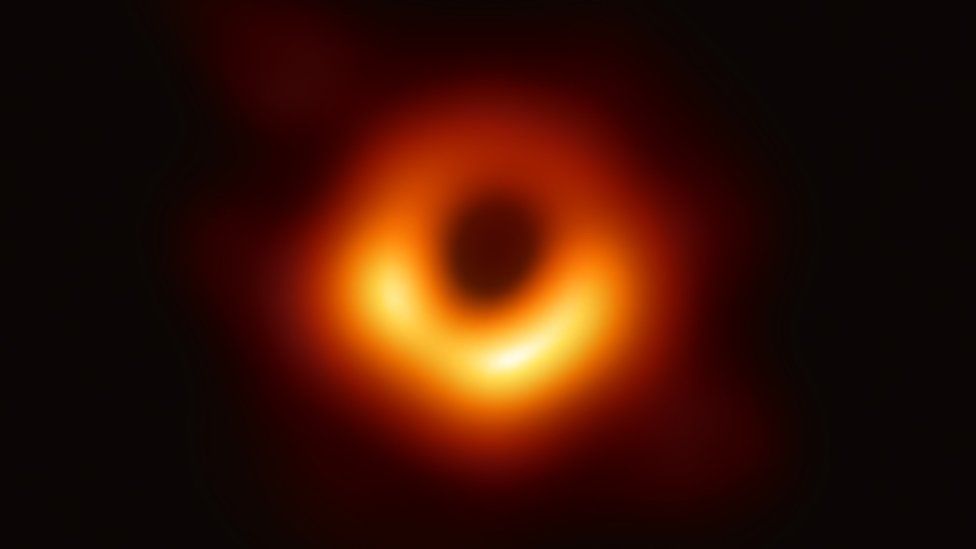First ever black hole image released. By Pallab Ghosh
Astronomers have
taken the first ever image of a black hole, which is located in a distant
galaxy.
It measures 40 billion
km across - three million times the size of the Earth - and has been described
by scientists as "a monster". The black hole is 500
million trillion km away and was photographed by a network of eight telescopes
across the world. Details have been
published today in Astrophysical Journal Letters. It was captured by the
Event Horizon Telescope (EHT), a network of eight linked telescopes. Prof Heino Falcke, of
Radboud University in the Netherlands, who proposed the experiment, told BBC
News that the black hole was found in a galaxy called M87.
"What we see is
larger than the size of our entire Solar System," he said. "It has a mass
6.5 billion times that of the Sun. And it is one of the heaviest black holes
that we think exists. It is an absolute monster, the heavyweight champion of
black holes in the Universe."

The image shows an intensely bright
"ring of fire", as Prof Falcke describes it, surrounding a perfectly
circular dark hole. The bright halo is caused by superheated gas falling into
the hole. The light is brighter than all the billions of other stars in the
galaxy combined - which is why it can be seen at such distance from Earth. The edge of the dark
circle at the centre is the point at which the gas enters the black hole, which
is an object that has such a large gravitational pull, not even light can
escape. The image matches what
theoretical physicists and indeed, Hollywood directors, imagined black holes
would look like, according to Dr Ziri Younsi, of University College London -
who is part of the EHT collaboration.
"Although they
are relatively simple objects, black holes raise some of the most complex
questions about the nature of space and time, and ultimately of our
existence," he said. "It is remarkable
that the image we observe is so similar to that which we obtain from our
theoretical calculations. So far, it looks like Einstein is correct once
again." But having the first
image will enable researchers to learn more about these mysterious objects.
They will be keen to look out for ways in which the black hole departs from
what's expected in physics. No-one really knows how the bright ring around the
hole is created. Even more intriguing is the question of what happens when an
object falls into a black hole...
https://www.huffingtonpost.in/entry/first-ever-image-of-a-black-hole-released_in_5cadebace4b01bf96008a332?utm_hp_ref=in-homepage
